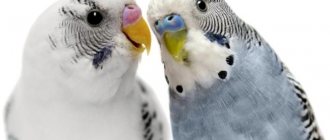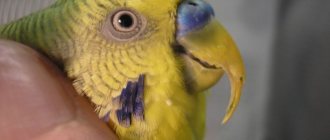Diseases from birds that humans can get through contact are not that rare. Moreover, you can get sick from both poultry and wild species. The pathologies that are transmitted to humans in this case are called zoonoses.
“A zoonosis is an infectious disease that is transmitted to humans from animals and birds. It doesn’t matter what kind of contact there was: direct, immediate, or the infection was transmitted through water or food,” says the head of the department of allergology and immunology of the Central Clinical Hospital of the Russian Academy of Sciences, allergist-immunologist, assistant of the department of immunology of the Russian National Research Medical University. N.I. Pirogova Evgenia Parshina .
The specialist notes that there are two main groups of diseases that can be picked up from birds:
- Diseases of the respiratory system, which include psittacosis and false tuberculosis.
- Enterobacteriosis. They are caused by Salmonella and primarily cause damage to the gastrointestinal tract, which is fraught with serious consequences.
Not a single option can be called pleasant, because they have a serious impact on the human body and destroy it for quite a long time. This means they cannot be ignored.
Worms, rabies, bacteria. What can you get infected from a dog? More details
Psittacosis
“The causative agent of this disease is chlamydia. The bacteria are widespread in nature, both among domestic birds and among wild bird species. So, you can get infected from chickens, ducks, turkeys, as well as from pigeons, sparrows and even parrots,” says Evgenia Parshina.
The main mode of transmission is airborne. In this case, damage to the lungs occurs, as a result of which pneumonia often develops, notes the immunologist.
Symptoms of infection can be varied. But doctors identify two main symptoms that indicate psittacosis infection. Evgenia Parshina notes such signs as:
- pain in the chest;
- a dry cough or one in which the discharge of mucous purulent sputum begins.
You should not ignore frightening signs; you should consult a doctor as soon as possible. It is important to understand here that ornithosis is an extremely serious disease that does not go away without leaving a trace. “Even after a course of treatment and complete recovery, a person’s condition will not be very good for a long time. All this is due to the toxic effects of chlamydia. At the same time, complete recovery also does not occur quickly. The situation is getting better after infection no earlier than three months,” says Evgenia Parshina.
An unexpected source. What diseases are transmitted by water? More details
Can you get infected from a parrot?
To begin with, it is worth noting that all diseases that are transmitted from animals to humans are called splinters.
They can be caused by both viruses and bacteria themselves.
In this case, it is worth understanding that a person’s susceptibility depends solely on the state of his immune system and other factors.
Diseases from parrots are transmitted to humans and you need to understand this!
According to recent research, there are three groups of diseases that are transmitted from parrots to humans:
- The first group includes diseases that most often occur in humans after contact with a sick bird: Newcastle disease, various allergic reactions, chlamydia, salmonellosis, and so on.
- The second group includes diseases for which cases of infection from parrots are quite rare: Cryptosporidiosis, erysipelas, influenza, pseudomonosis, rabies, pasteurellosis, and so on.
- The third group contains potentially dangerous diseases: food poisoning with various toxins, histoplamosis, West Nile fever, cryptococcosis, and so on.
One of the most dangerous diseases on this list is salmonellosis, which is carried not only by parrots, but also by other pets.
A bird infected with salmonellosis becomes lethargic, and sometimes even paralysis of the legs is observed. Loose stools are usually immediately noticeable in the cage.
This infection can kill not only birds, but also humans. In this case, only emergency treatment with antibiotics can save the situation.
False tuberculosis (pseudotuberculosis)
This is the so-called yersinia infection. It is fraught with the development of toxic, allergic and polyfocal symptoms. The following symptoms develop against the background of infection:
- fever - temperature can fluctuate between 38-40 degrees;
- intoxication;
- intestinal spectrum disorders;
- manifestations of a catarrhal nature;
- rash on the body like scarlet fever, accompanied by itching and peeling;
- swelling of the joints.
Diagnosis is carried out using the PCR method, and the pathology is treated using antibacterial therapy. Naturally, therapy should be prescribed exclusively by a doctor and only according to strict indications. Such an infection poses a potential danger in that septic shock can develop against its background. Recovery will also not be quick; it can take up to 3 months.
There is contact. How can infections be transmitted? More details
How to understand that a parrot is sick
You can find out that your feathered pet has been affected by a virus or another disease by the following symptoms that occur in the bird:
- weakness;
- itching;
- depressed state;
- peeling of the skin;
- drowsiness;
- lack of coordination;
- rushing around the cage, anxiety, unmotivated screams;
- swelling of the paws;
- stuck together and stained feathers near the cloaca;
- sneeze;
- indigestion;
- discharge from the nostrils;
- feather loss;
- cough, shortness of breath;
- thirst;
- refusal of food;
- sloppy appearance.
The sooner measures are taken, the lower the likelihood of infection of the owner and the higher the chances of recovery for the bird.
Salmonellosis
Traditionally, salmonella has been associated with consumption of fish products or eggs. However, humans can also become infected with a similar infection from birds. “The disease leads to intoxication and dehydration (the latter can become deadly),” says Evgenia Parshina.
There are a number of risk groups for whom the infection is potentially fatal. These include:
- people with immunodeficiency conditions;
- young children;
- old people.
“The danger is that salmonella penetrates organs and tissues, leading to damage to the central nervous system, cardiovascular system, and gastrointestinal tract. This often causes death,” says Evgenia Parshina.
They will lend a helping hand. What diseases can pets treat? Read more
Speckled skin
Microsporia or ringworm is one of the most common skin diseases of animals. When people become infected from them, people also get sick: small spots appear on the skin, covered with gray scales; there can be from two to a hundred of them on the human body. The causative agent of microsporia also affects the hair, so sometimes during treatment the head has to be shaved, which is very unpleasant for the patient. If you notice even a slight redness in the shape of a circle or ring, do not be lazy - go to a dermatologist. If time is lost, curing the disease will be much more difficult.
Preventive actions
Of course, all these troubles can be avoided; you should not immediately give up raising poultry, a parrot in your apartment, or feeding pigeons and sparrows.
The immunologist recommends taking preventive measures; it is quite simple. So, you should purchase birds for the barnyard only in trusted places, and do not forget that all accompanying documents must be signed by a veterinarian or an entire veterinary service responsible for assessing the health status of birds.
“If there is a suspicion that the bird is sick, you should immediately contact a veterinary station for an examination and determine the situation,” says Evgenia Parshina. You should also pay attention to proper cleaning of premises, be it a chicken coop or a bird cage at home. “You should clean basements, attics and summer cottages after the winter season only using respirators, goggles, gloves and special disinfectants,” says Evgenia Parshina.
First, vaccinations...
If you notice any of the signs described above, do not rush to make a diagnosis yourself: even doctors never make a final verdict without the results of laboratory tests. It is better to immediately contact specialists, since it is always easier to get rid of any disease in the early stages. However, you need to be prepared for the fact that treatment can last from several weeks to months. In severe cases, hospitalization cannot be avoided. The best infection prevention is knowledge. Knowing that four-legged friends can be sources of very unpleasant diseases, it is wiser to prevent infection. If you pick up a dog or cat on the street, be sure to take it to the vet. He examines the animal for diseases, “illuminates” it with a fluorescent lamp to find out if there is microsporia, and gives the necessary vaccinations. Only then can you fearlessly introduce the foundling to your household. If the animal is sick, try to cure it; if the case is severe, it is better to euthanize - it will be more humane. But under no circumstances throw you out onto the street! After all, it becomes a source of infection for other people. And please practice good personal hygiene.
APN01
The Austrian biotechnology company APEIRON Biologics AG has begun clinical trials of the drug APN01, which was developed in the early 2000s. Scientists have discovered that the ACE2 protein, which is part of it, suppresses infections caused by viruses of the SARS group. It also helps protect the lungs during respiratory failure.
The authorities of Austria, Germany and Denmark agreed to conduct clinical trials of the drug. During the study, 200 patients with COVID-19 will receive APN01. Then virologists will evaluate the effect of the drug, and also analyze its effectiveness and safety for patients who require artificial ventilation.
Ivermectin
Australian scientists from Monash University and the Royal Melbourne Hospital have discovered an antiparasitic agent that virtually destroys the SARS-CoV-2 virus within 48 hours, reducing its presence by 99%. According to researchers, the use of ivermectin will help avoid severe complications of COVID-19, as well as prevent the spread of the virus. During the experiments, ivermectin was added to cells infected with SARS-CoV-2. After 24 hours, the proportion of viral RNAs decreased by 93%, and after 48 hours, the presence of the virus decreased by 99%.
A single treatment with ivermectin can reduce the virus by 5 thousand times in 48 hours, scientists say. The drug is approved by WHO.
Remdesivir
Remdesivir is used to treat Ebola fever. Canadian scientists from the University of Alberta have found that the drug blocks the reproduction of coronavirus. Studies have proven the effectiveness of the antiviral agent in the treatment of MERS respiratory syndrome and SARS-CoV, the RNA structure of which is similar to coronavirus. Virologists obtained identical results in the case of SARS-CoV-2, which causes COVID-19, and concluded that remdesivir could be used for treatment. The New England Journal of Medicine also published the results of a study in which the use of the drug improved the condition of 68% of patients. Japanese Prime Minister Shinzo Abe said in parliament on April 28 that he plans to authorize the use of remdesevir to treat COVID-19. In the United States, the drug was successfully tested, and on May 2, the Department of Sanitary Inspection issued an emergency permit for its use.
Lopinavir and ritonavir
A combination of antiviral drugs called kaletra is used to treat HIV. According to WHO, the use of the drug in combination with other medications is effective in the fight against coronavirus. At the end of January, the Ministry of Health included lopinavir with ritovinar in the list of drugs recommended for COVID-19 as antiviral therapy. As a result, the demand and sales of kaletra increased tenfold. Experts warn that uncontrolled use of the drug without a doctor's prescription can cause harm to health, including diarrhea and liver damage.
Chinese scientists have found that lopinavir and ritonavir are not effective in treating mild to moderate COVID-19. Taking medications does not improve the clinical picture; moreover, it may cause side effects. The experiment involved 86 patients, of which 34 people took a combination of lopinavir and ritonavir, and 17 patients did not receive any drugs. After two weeks, both groups showed similar results, but those taking the medications experienced side effects.











